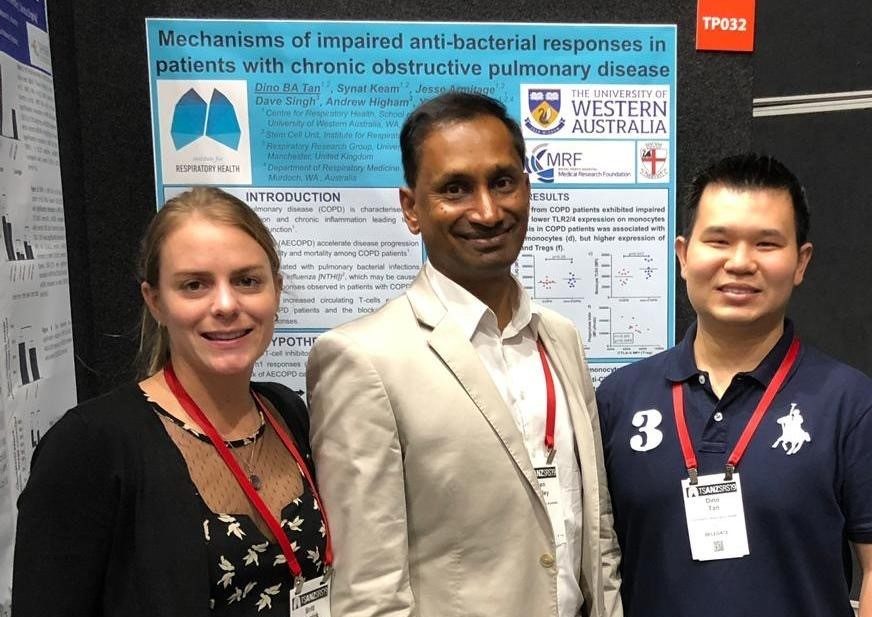A/Prof Yuben Moodley, Fiona Stanley Hospital and University of Western Australia
A/Prof Moodley sat down with the PACT team to talk about his teams clinically focussed research, including how it started, what the team hopes it will achieve and the challenges they’ve faced.
Tell us a bit about yourself and why you chose Pulmonary Fibrosis (PF) as your research area:
I am a Respiratory Physician at Fiona Stanley Hospital and Clinical Academic at the University of Western Australia. In addition, I am Senior Editor of the journal Respirology and Deputy Director of the Institute of Respiratory Health. Lung diseases are a very important cause of global morbidity and mortality. As a physician I am acutely aware that significant lung damage leads to shortness of breath all day with no reprieve. This is a very difficult form of suffering and requires urgent solutions to preserve lung function. Pulmonary fibrosis is the end-stage of several pathways of lung damage. Understanding the mechanisms and “curing” pulmonary fibrosis is one of the holy grails of medicine.

Describe your clinical research project in a couple of sentences:
We are carrying out several projects in translational and discovery science in pulmonary fibrosis. One of the NHMRC funded projects identifies the markers in blood that would predict which patients would decline in their lung function versus those patients that would remain stable. We are also determining which markers in blood would predict patients would respond to anti-fibrotic treatment. This is important since we can avoid using expensive treatments with significant side-effects, if patients are not going to respond to certain treatments. Furthermore, these blood markers will give us insights into the molecular processes in the lung that would determine what pathways are responsible for the decline in lung function at the tissue level.
Tell us how this project came about:
The Australian Idiopathic Pulmonary Fibrosis (IPF) Registry was the foundation on which we built our national infrastructure. This resource gave us the opportunity to seek funding for pulmonary fibrosis research. As such we were able to collect blood from our patients on the registry and determine the demographics and trajectory of their lung function. We then correlated their blood markers with these demographics and treatment. Our CRE also allowed us to set up a tissue bank that provides us with IPF lung tissue to determine the role of these markers in tissue.
What do you hope this project will achieve?
We will find blood markers that will be used in clinics around the world that would determine patients who have more serious disease versus those who are stable.
With the rapid increase in medications for pulmonary fibrosis, we hope to develop a clinical test that would allow us to determine which patients would respond to specific therapeutic agents thus allowing doctors to “personalise” treatment for pulmonary fibrosis patients.
We hope to identify unique mechanisms of progression at the level of lung tissue damage in pulmonary fibrosis thus leading to new targets for treatment.
What has been the biggest challenge of the project so far?
Funding is the biggest challenge and the collection of blood samples to a lesser extent. The latter has been overcome by a truly national effort to obtain blood and this is succeeding. If we had more money, we could do so much more, so much more quickly.
The people working on this project are:
Dr Britt Clynick and Dr Dino Tan are post-doctoral scientists working on the scientific aspects of this project. Ms Chantalia Tejda is working in the blood biobank. We have a national collaboration of the members of the Australian IPF Registry and physicians from all the major sites.
What do you see as the biggest evidence gaps in PF care? What are the clinical research priorities?
Why and how people get pulmonary fibrosis. The mechanisms causing pulmonary fibrosis and its progression. We should be looking at the identification and treatment of early lesions that may prevent end-stage lung disease.
